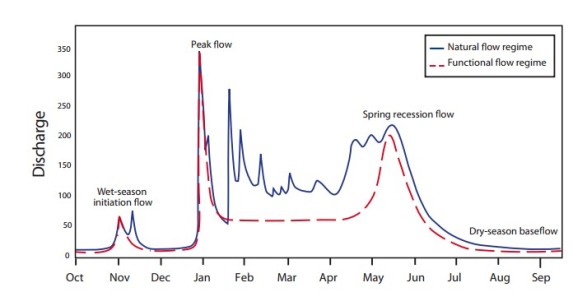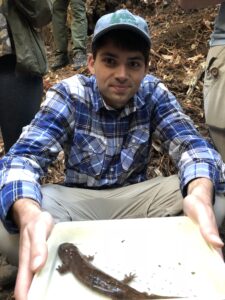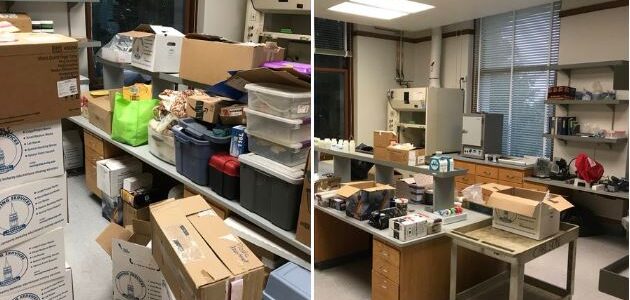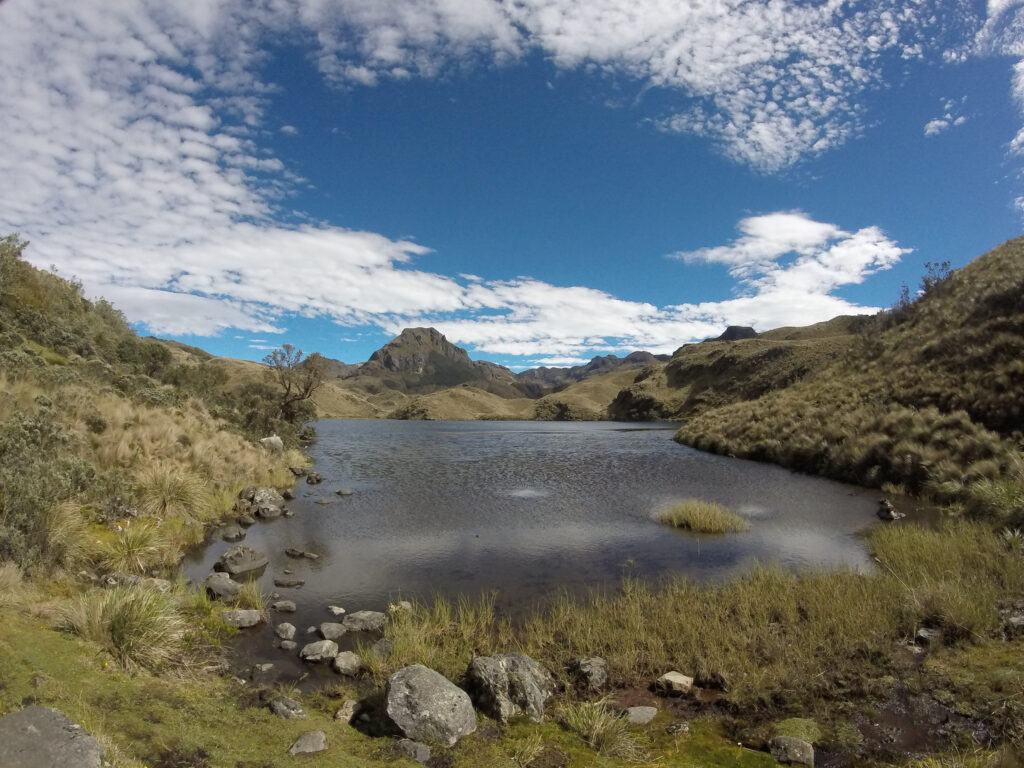- Akira Terui, postdoc from the University of Minnesota, visited the lab in early November for an ongoing collaboration on the Moran effect.
- Xavier Benito, SESYNC Postdoc Fellow, visited the lab in mid November to analyze diatom community time-series data.
- Albert gave a seminar at UC Riverside (Evolution, Ecology, & Organismal Biology Colloquium)
- We participated at the American Geophysical Union Fall Meeting in Washington, D.C., with the presentation ‘Understanding the cumulative effects of dams on regional streamflow dynamics‘.
News
A functional flows approach to managing environmental water
Our latest post in CaliforniaWaterBlog describes how environmental outcomes can be improved when water is allocated using a functional flow approach. Read more here!

Five key lessons from the UC Water Academy
In the latest issues of Breakthroughs, the magazine of the College of Natural Resources, we identify five key lessons from our experiential education course, the UC Water Academy.
Emergent effects of warming on stream food webs

I am Kyle Leathers, a first-year PhD student interested in how aquatic communities are affected by environmental stressors, species interactions, and the combination between the two. My research investigates these topics, focusing on the effects of thermal regimes on stream food webs controlled by the predatory Coastal Giant Salamander (Dicamptodon tenebrosus).
I will apply observational, experimental, and modeling approaches to achieve realism, control, and generalizability in this research. Diverse pool-riffle sites throughout a watershed and artificial streams provide relevant scales for fieldwork and experiments respectively. I will use random forest algorithms to determine the relative importance of warming to community structure. Additionally, I will test food web stability using stable isotope analysis. My results will ultimately inform a Spatial Stream Network (SSN) model that predicts stream food-web structure and Coastal Giant Salamander abundance under future climate change scenarios. Understanding how food-web structure responds to increased water temperature can improve our ability to anticipate associated risks such as trophic cascades, pollutant bioaccumulation, and algal blooms.
Carlson Lab moves to Wellman Hall!

The group moved from Mulford Hall to Wellman Hall during Fall 2018. Everyone chipped in and helped pack up, clean up, and then unpack in the new space. This was a multi-step (multi-month?) effort, and one big step towards our goal of creating a freshwater science cluster in Wellman Hall!
Looking for an overview of California Water in 2018?
The Public Policy Institute of California has released a briefing kit on managing California’s water, highlighting the state’s most pressing issues including climate change, drought, headwater forest management, and securing safe drinking water supplies to disadvantaged communities.
Getting strategic about freshwater biodiversity conservation in California
Read our latest post on CaliforniaWaterBlog:
Getting Strategic about Freshwater Biodiversity Conservation in California

A palaeocological perspective into resilience
Understanding how freshwater ecosystems respond to environmental change requires knowing whether recent changes are within the bounds of natural variation or if these systems are, instead, entering new states.
I am Xavier Benito-Granell, an aquatic ecologist and new SESYNC Postdoc Fellow working on questions that revolve around the long-term resilience of diatom communities and their ability to capture regime shifts in lakes. My project, co-developed with my external mentor Albert Ruhi, aims at identifying abrupt transitions in palaeoenvironmental records of high-elevation Andean lakes.
We are applying time-series methods on a unique combination of diatom community data, biophysical data (pollen and sediment geochemistry), and human data (archaeological records). This historical perspective combines data at decadal to millennial scales, and allows asking whether early-warning signals precede regime shifts–something that would be useful to try identify lakes that may be on the verge of a critical transition. We hope this work will advance our understanding of the long-term dynamics and trajectories of high-altitude lakes, and of their responses to ongoing anthropogenic and environmental change.

Paramo landscape around Lake Patoquinuas, Cajas National Park (Ecuador)
September 2018 updates
- We are excited to announce that we are starting two undergraduate research projects! Chen Li, URAP scholar, is assisting us with the design of the artificial stream system. Gabby Doerschlag, SPUR scholar, is going to study benthic invertebrates in Strawberry Creek.
- We got a SESYNC working group funded! This is a 2-year, collaborative project with several institutions across the U.S. to work on sustainable water management through dam operations, and advance quantitative (time-series) methods that can help us get there. This project will start in January 2019. More on this soon!
- We hosted Rachel Stubbington, who visited us from Nottingham Trent University (UK) to explore collaborations on intermittent river ecology.
- Also, check out the book chapter on hydrological alteration and biological invasions, part of the book on Multiple Stressors in River Ecosystems (edited by Sabater, Elosegi & Ludwig).
- And last but not least, we received the final pieces of lab equipment we were waiting for: stereomicroscopes, an oven, and a microbalance. Ready for aquatic invertebrate business!
California Fourth Climate Assessment Reports released
California recently released the findings of its Fourth Climate Change Assessment. The assessment includes a statewide summary report, regional reports, and topical reports and are intended to translate the state of climate science into useful information for decision-makers and practitioners to catalyze action that will benefit regions, the ocean and coast, frontline communities, and tribal and indigenous communities. Ted led the North Coast Region Report, with contributions from several UC colleagues.
